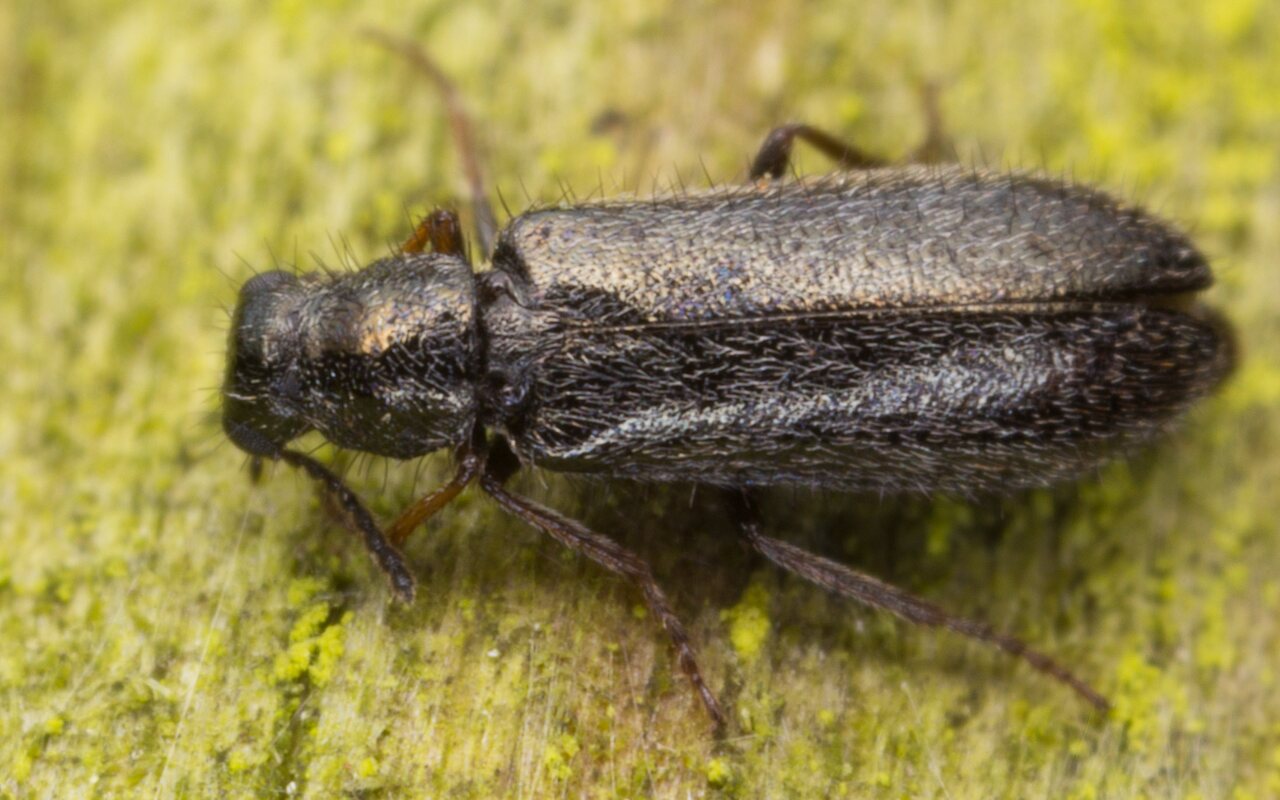
Dasytes plumbeus · pievavabalis
- Bleischwarzer Wollhaarkäfer
- hentotakukas
- loodkleurige bloemweekschildkever, loodkleurige bloemweekschild
- rościsz gałązkowiec
ukbeetles.co.uk/dasytes-plumbeus Present throughout the Palaearctic region and generally common across Europe, North Africa and the Near East, this species extends north into the UK and central provinces of Fennoscandia and since 2010 has become established in North America (British Columbia).
Adults are active over a relatively short season, from May until July or August and peaking during June, they first appear on flowers and may be common on hawthorn blossom and umbels but they soon appear when sweeping shrubs and low foliage of various deciduous trees but especially oak and beech. They usually occur in open grassland or densely vegetated scrubland, often near hedgerows or where there are trees or decaying wood. Mating occurs early in the season, larvae are predatory and known to develop in decaying wood on trunks and thicker branches of deciduous trees, they pupate among the wood.
3.5-4.6 mm. Elongate and discontinuous in outline, the base of the elytra broader than the pronotum, entirely shiny black with a metallic green or bronze reflection, dorsal surface with a mixture of dark erect and pale recumbent pubescence, legs substantially dark with the tibiae and tarsi at least to some extent orange, often entirely so, antennae dark with the second segment and sometimes the first and/or the third partly orange. Head transverse with large convex eyes and strongly converging temples, surface flat or weakly concave and finely punctured, terminal segment of maxillary palps elongate and rounded apically, antennae dimorphic; longer, more slender and only weakly serrate in the male, shorter and more strongly serrate in the female. Pronotum only slightly transverse in both sexes, as broad as the head in the female but narrower in the male, broadest about the middle and narrowed to rounded angles, apical and basal margins almost straight, surface evenly convex, not explanate or depressed towards the lateral margins, shiny and punctured throughout but more sparsely so on the disc. Elytra very elongate, with broadly-rounded shoulders and dilated laterally before a continuously curved apical margin, without striae and finely punctured throughout. Legs long and slender, usually with pale tibiae and tarsi contrasting with dark femora. Tarsi 5-segmented, the third segment distinctly bilobed but narrow and not conspicuously broader than the others, claws smooth with a well-developed basal tooth. Males are generally more slender than females but can always be distinguished by their much larger eyes and longer and more slender antennae.
‥
0 comments
Add a comment